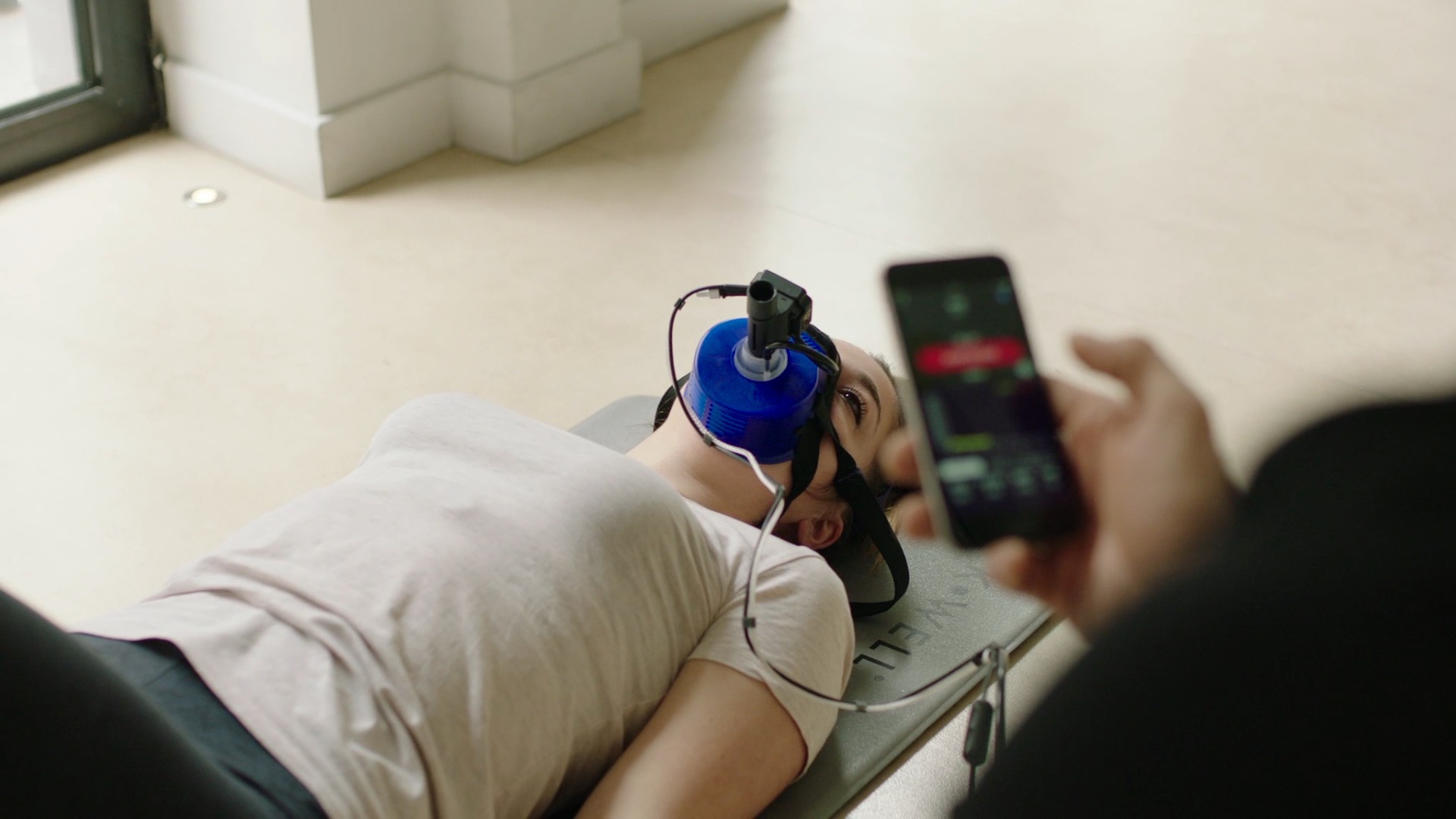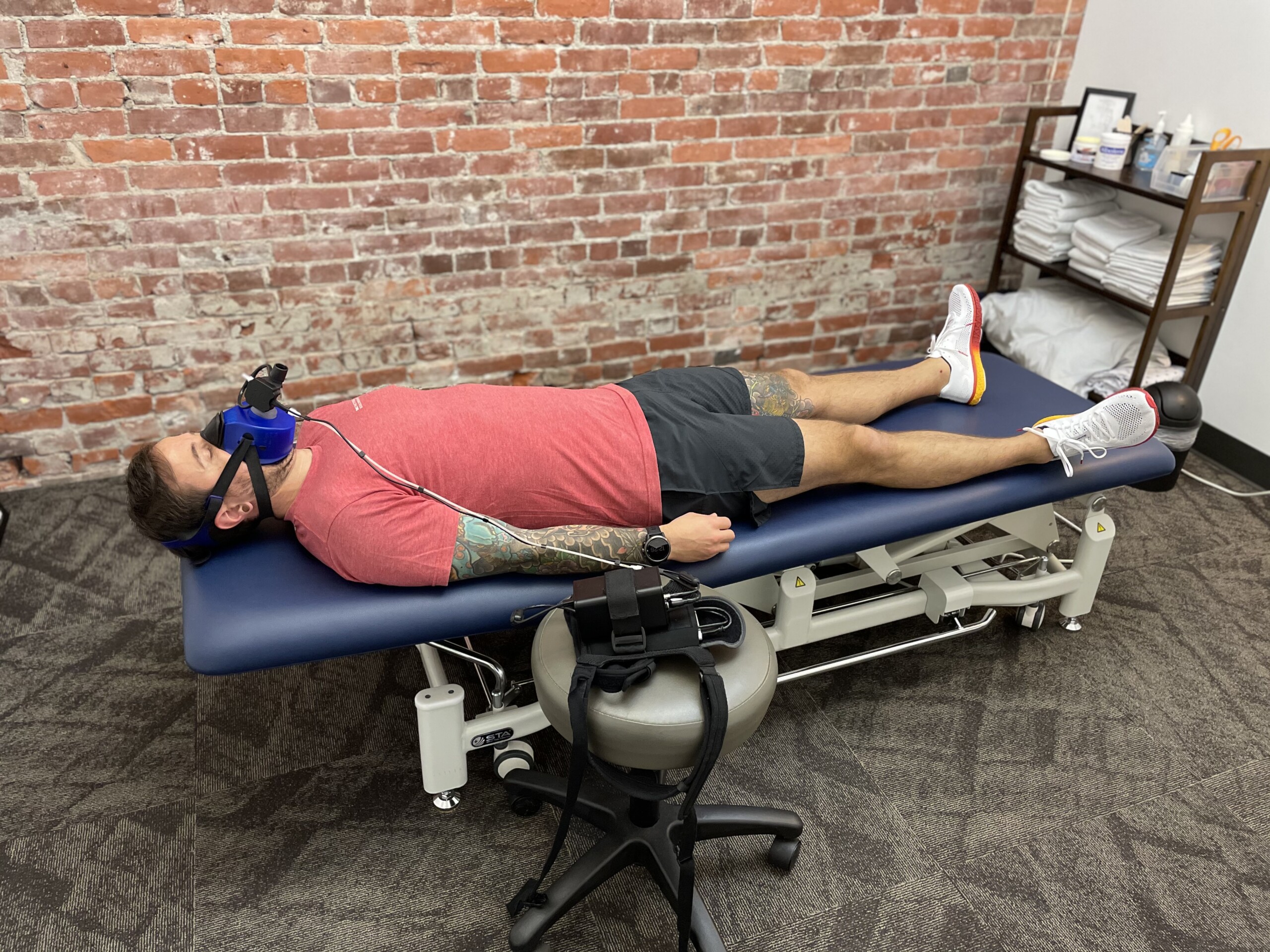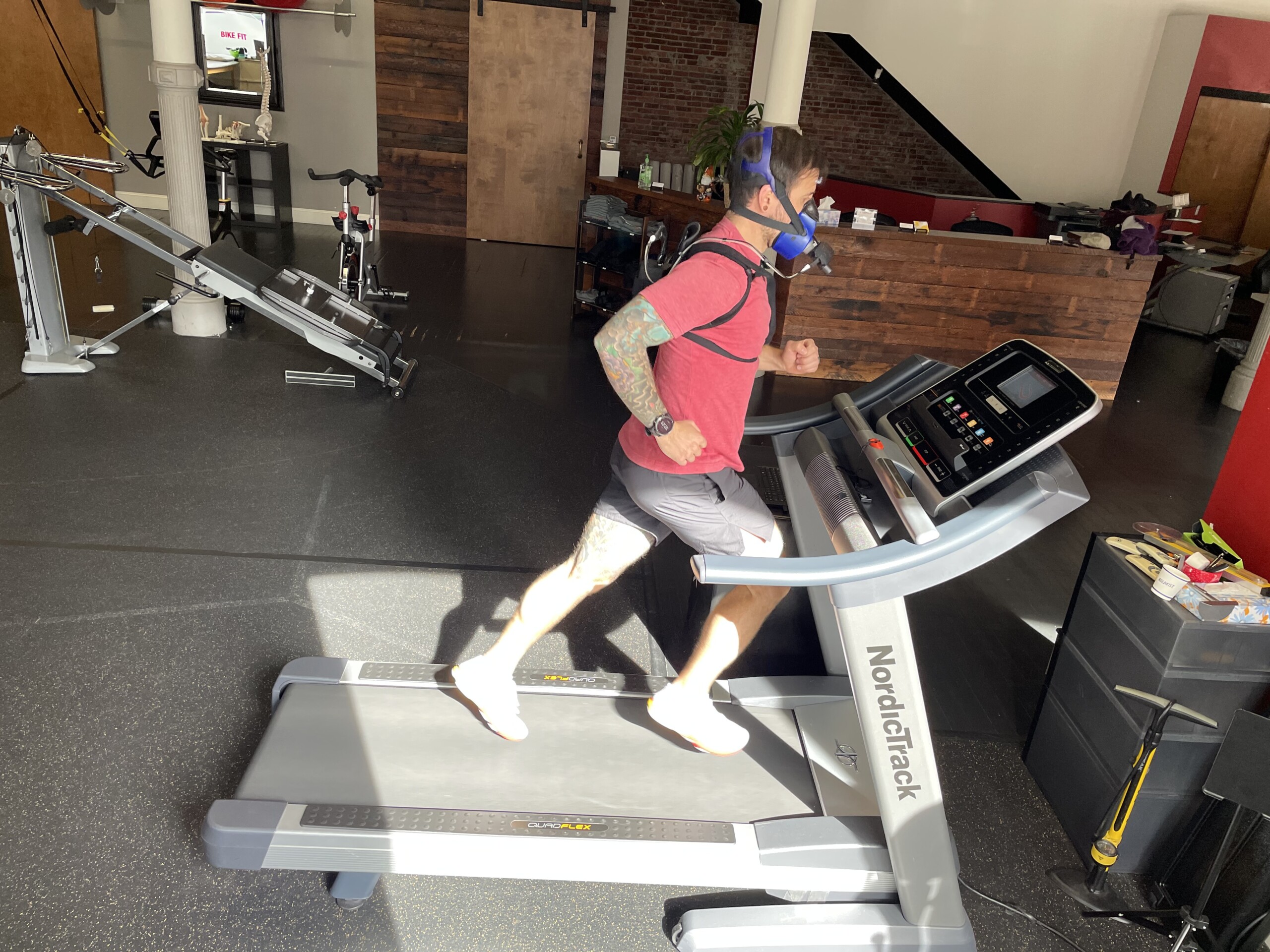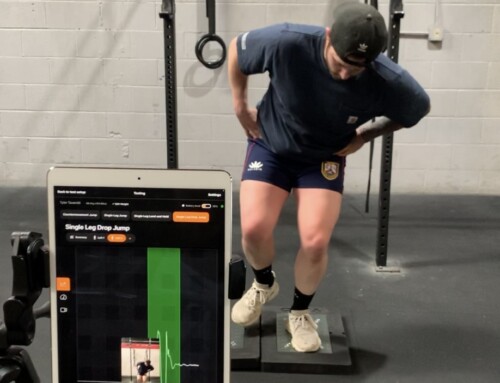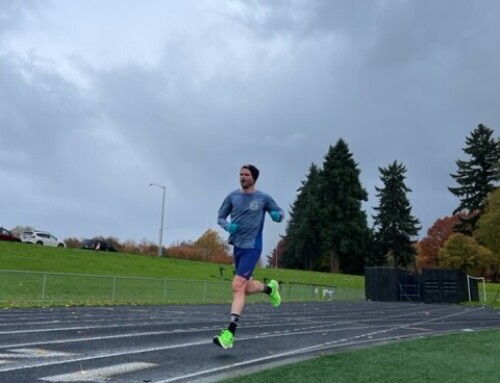5 Reasons to do Metabolic Testing
By Matthew Marino, PT, MSPT, CPE, CSCS, TSAC-F
If you are an athlete, coach, trainer, or somebody who’s interested in using data to manage health and fitness, you may have heard of metabolic testing. Resting Metabolic Rate (RMR) and Maximal Oxygen Consumption (VO2 Max) testing are becoming more well known, and there are good reasons for doing them. In the not-so-distant past, these tests were hard to access, expensive, and reserved for elite athletes or medical purposes. Advancements in technology have paved the way for everyone to now have access to these tests and the rich, life altering data they provide.
RMR tests provide a highly accurate measure of the calories we burn at rest, how fast or slow our metabolism is compared to normative data, and the percentage of the resting calories that we burn that come from fat versus carbohydrate fuel sources. There are benefits to doing this test for those pursuing a healthy weight loss programs, for early identification or confirmation of a potential metabolic disorder, and for athletes trying to stay on the tip of the spear when it comes to managing nutrition and training for optimal performance.


VO2 Max tests provide a highly accurate measure of our maximal ability to consume oxygen to produce energy during exercise. VO2 Max is one of the best indicators of our overall physical health, fitness, and capacity to perform work in sports and life. There are benefits to doing this type of test for those embarking on almost any type of nutrition or exercise program to measure the function and performance of our cardiovascular, respiratory, and metabolic systems, and how each is a contributor (or limiter) to our ability to achieve our goals. This measure is so important that in 2016 the American Heart Association began recommending that VO2 Max be assessed and used as a clinical vital sign.
There is value in doing each test in isolation, and even more in doing them both. The whole is often greater than the sum of the parts. The combination of RMR and VO2 Max tests along with Spirometry, Near Infrared Spectroscopy (NIRS), and a well-designed questionnaire are a powerful performance science tool kit that all can access and benefit from with the help of a good coach. Here are 5 reasons to consider booking your testing today.
Reason 1: Establishing the Baseline
There is a very simple question I like to get patients and clients to think about when it comes to rehabilitation, fitness and performance optimization. How do we get to where we want to go, if we don’t know where we are beginning? Without a baseline, we begin our journey lost, and fly blind. There might be multiple things we want to train or coach, so we also need a way to identify the highest priorities. Metabolic testing prior to embarking on nutrition or training programs helps establish a baseline so that when the time comes to measure progress, we have the basis of comparison needed to determine how effective the programming has been. For more on this see Reason 5: Feedback Loops below.

Here are 3 important baselines that come from metabolic testing, and why they are valuable.
• Baseline RMR testing allows us to see if changes in our nutrition and training increase or decrease our metabolic rate, fat burning efficiency, and cellular health.
• Baseline VO2 Max testing allows us to see how well our nutrition and training work for increasing our efficiency and capacity.
• Baseline HR zones, ventilatory, and anaerobic thresholds allow us to track changes in these metrics so that we can adjust our training to better align them with our goals.
Reason 2: Identifying the Biggest Limitations
In sports and life, it’s always best to play to our strengths and improve our weaknesses to be successful. Therefore, training requires a laser focus on the biggest limitations in order to improve. But what are they? Metabolic testing sheds light on them, and with good coaching and nutrition advice they can be reduced or eliminated.
An RMR test paints an excellent picture of how the heart, lungs and other organ systems are functioning at rest. It can highlight potential issues with fat burning, cellular health, nutrition, exercise habits, and metabolic disorders like Diabetes, Pre-Diabetes, and Thyroid conditions.


When it comes to identifying exercise and performance limitations with a VO2 Max test, there are quite a few things to look out for, and an order of operations for identifying and dealing with them.
1. Is the heart working well? Organ systems suffer without good oxygen and nutrient delivery, and removal of carbon dioxide (CO2) and waste products.
2. Are the lungs working well? Organ systems need oxygen to enter the bloodstream for them to utilize, and they need to get rid of CO2.
3. Do we have a healthy metabolism? If not, we might be suffering from a metabolic disorder, retaining body fat, fatiguing faster, and falling behind the competition.
4. Is there a strength or power deficit? If the heart, lungs, and metabolism are healthy, movement quality, strength and power affect function, performance and injury risk.
If cardiovascular, respiratory, metabolic, strength and power limitations are identified during RMR and VO2 Max testing, they are trainable, and changeable. Once they are reduced or eliminated, we become healthier, and have a better foundation in place to make functional gains, like improvements in endurance and sport specific skills.
Reason 3: Identifying Unique Training Zones
Our HR zones are unique to each of us, and it might come as a surprise that they vary with our sports and activities. One of the most valuable things we get from a VO2 Max test is accurate, individualized HR zones that we can apply in our training. Wearables and the internet can’t compete with using performance science to obtain our very own zones. Estimated HR zones can do more harm than good in some cases, causing us to train in the wrong zones, or in zones we don’t need to be training. To eliminate limitations, we need to use a precise, data driven training approach.

How do we know which zones we need to spend time training? If we have limitations, we can see exactly which HR zones are compromised and perform targeted training.
Because HR zones are different for different sports or activities, triathletes should consider testing on the bike and treadmill. Not only will the HR zones be different for each activity, but the limitations for each may be different too. By identifying our limitations as well as our unique training zones for each of the sports or types of training we do, we are able to design the most appropriate and effective training program to reach our goals fast, with the minimum amount of stress on our systems to perform better, stay healthy and remain injury free.
Reason 4: Designing Personalized Programs
It’s always tempting to try the training program and diet that top athletes and social media influencers post, especially when we play the same sports, or have the same body composition goals. To get the best results and prevent painful injuries, training and nutrition need to be tailored to specific individuals. Just because something works for friends, family or the pros doesn’t mean it will work for us. Metabolic testing provides is an objective, systematic way to ensure we are doing exactly what we need, to not wasting time and money experimenting.

A slow metabolism or poor fat burning from eating too little or training the wrong way needs to be addresses in very personal ways. A cardiovascular limitation needs to be addressed differently than a respiratory limitation, strength deficit, or metabolic limitation. We can only manage what we measure.
The learnings that come from metabolic tests can drive specific nutrition and training adjustments. Not everyone will have the same limitations, history, and goals, so everyone’s program should be different. Those with structural, foundational limitations need to be doing different things than those who don’t have any such issues. The goal is to do the minimum effective dose of training to achieve goals, to be eating just the right amount of the right foods to refuel, and to be getting the right amount of rest and recovery to optimize readiness, health and performance. Metabolic testing is one of the best ways to use our personal data to calibrate our nutrition and fitness journey and head in the right direction. Because this testing is now so accessible, it can be repeated to recalibrate our bearing as limitations and goals change.
Reason 5: Keeping a Tight Feedback Loop
The best athletes, coaches and trainers keep really tight feedback loops. They are constantly measuring and remeasuring to track progress and adjust programs. Once the baseline and highest priority limitations are identified, targeted training and nutrition programs can be developed to achieve goals. But we can’t stop there. We need to retest often enough to make sure what we are doing is actually working, identify new limitations, modify programs, avoid plateaus, prevent injuries, and thrive.
Feedback loops are an integral part of rehabilitation, training, coaching and life. We rely on them to function, both consciously and subconsciously. Healthcare providers, coaches, trainers, athletes and people in general should be using them constantly. Without them, we do not know if we are doing better, worse, or maintaining the status quo.

Summary
Metabolic testing provides us with a reliable, accurate and insightful window into ourselves. It allows us to determine exactly how harmoniously all of our organ systems function together. It helps us set a baseline understanding of our inner workings and identify if any part of us is playing “out of tune” and throwing off our inner symphony. The data we get from metabolic tests allows us to pinpoint exactly what needs to be adjusted and why, so that we can uniquely and precisely make changes in our nutrition and training. With this tight feedback loop, we can recalibrate as many times as we need to achieve our health, fitness and performance goals. Let’s not waste time and money experimenting with diets and training programs we see posted online. The pros don’t take this approach, and we shouldn’t either. Let advanced technology, science and data drive us to be the best versions of ourselves. Book your metabolic testing today.
Matthew Marino is the CEO of Prime Performance LLC, a Portland, OR based company dedicated to helping people heal, perform, play, work and live better through the application of advanced technology and data driven rehabilitation, performance science, ergonomics, training, coaching, health, fitness, strength and conditioning services. He is the Director of Ergonomics and Human Factors for HeroWear, LLC, a Nashville, TN based wearable assistive technology and exosuit company, and the Lead Human Performance and Occupational Safety Consultant for New Stone Soup VT, LLC. Matt is an active member of the ASTM International F48 Committee on Exoskeletons and Exosuits, and a founding partner of the ASTM International Exo Technology Center of Excellence.

